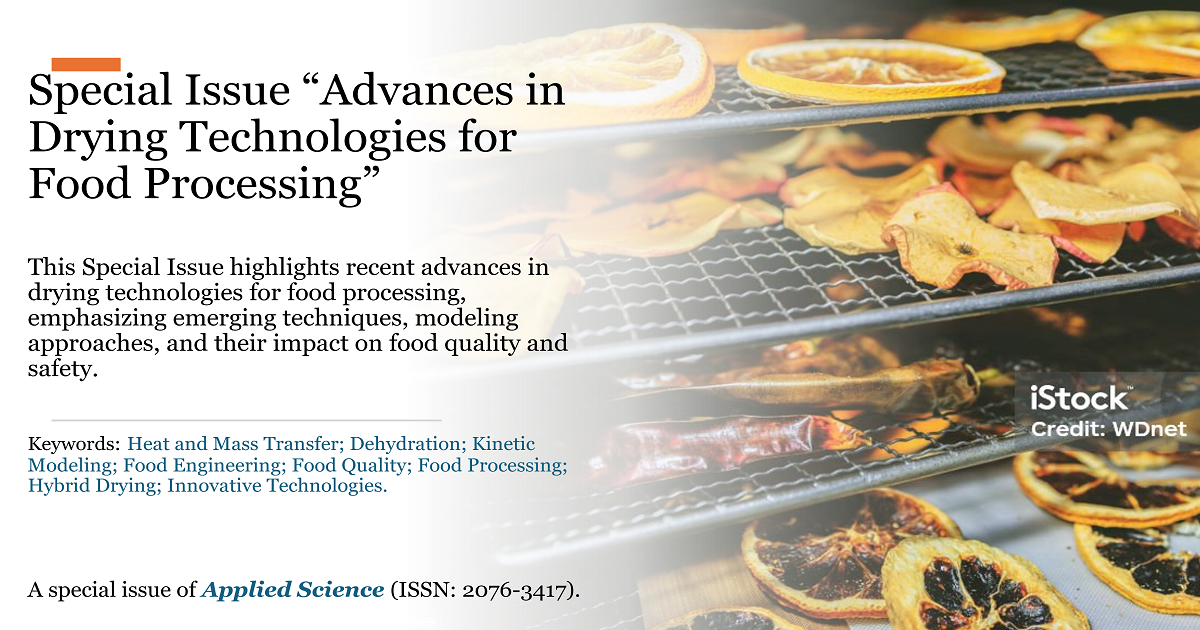- 2.5Impact Factor
- 5.5CiteScore
- 17 daysTime to First Decision
Advances in Drying Technologies for Food Processing
This special issue belongs to the section “Food Science and Technology“.
Special Issue Information
Dear Colleagues,
This Special Issue is dedicated to recent advances in drying and dehydration technologies for food processing, with a particular focus on emerging techniques aimed at preserving food properties. It will address the use of mathematical modeling and computational methods to describe process behavior and enhance drying performance, as well as the effects of innovative drying conditions on food quality and safety. The Special Issue will also provide an overview of both traditional and advanced drying techniques applied in the development of novel processes and products.
Dr. João Renato de Jesus Junqueira
Prof. Dr. Jefferson Luiz Gomes Corrêa
Prof. Dr. Javier Telis-Romero
Guest Editors
Manuscript Submission Information
Manuscripts should be submitted online at www.mdpi.com by registering and logging in to this website. Once you are registered, click here to go to the submission form. Manuscripts can be submitted until the deadline. All submissions that pass pre-check are peer-reviewed. Accepted papers will be published continuously in the journal (as soon as accepted) and will be listed together on the special issue website. Research articles, review articles as well as short communications are invited. For planned papers, a title and short abstract (about 250 words) can be sent to the Editorial Office for assessment.
Submitted manuscripts should not have been published previously, nor be under consideration for publication elsewhere (except conference proceedings papers). All manuscripts are thoroughly refereed through a single-blind peer-review process. A guide for authors and other relevant information for submission of manuscripts is available on the Instructions for Authors page. Applied Sciences is an international peer-reviewed open access semimonthly journal published by MDPI.
Please visit the Instructions for Authors page before submitting a manuscript. The Article Processing Charge (APC) for publication in this open access journal is 2400 CHF (Swiss Francs). Submitted papers should be well formatted and use good English. Authors may use MDPI's English editing service prior to publication or during author revisions.
Keywords
- heat and mass transfer
- dehydration
- kinetic modeling
- food engineering
- food quality
- food processing
- hybrid drying
- innovative technologies

Benefits of Publishing in a Special Issue
- Ease of navigation: Grouping papers by topic helps scholars navigate broad scope journals more efficiently.
- Greater discoverability: Special Issues support the reach and impact of scientific research. Articles in Special Issues are more discoverable and cited more frequently.
- Expansion of research network: Special Issues facilitate connections among authors, fostering scientific collaborations.
- External promotion: Articles in Special Issues are often promoted through the journal's social media, increasing their visibility.
- e-Book format: Special Issues with more than 10 articles can be published as dedicated e-books, ensuring wide and rapid dissemination.

